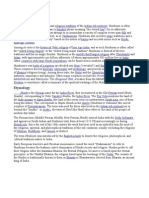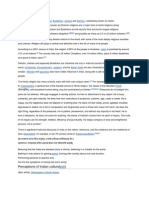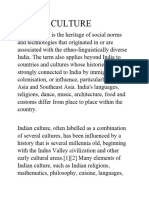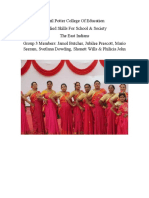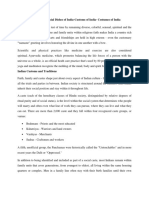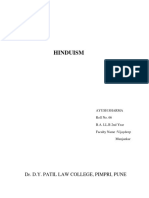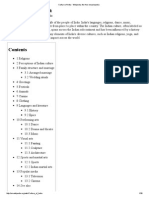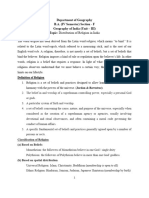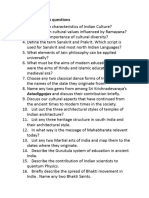0% found this document useful (0 votes)
32 views8 pagesFoundation Course
Indian culture is a rich tapestry of diverse civilizations, encompassing various elements such as clothing, festivals, languages, and religions, with Hinduism being the most prevalent. The culture is characterized by the principles of Human Values and Holism, and it has been shaped by numerous other cultures throughout history. Major religions originating from India include Buddhism, Hinduism, Jainism, and Sikhism, with significant societal impacts evident in festivals, rituals, and dietary practices.
Uploaded by
Darshil BhansaliCopyright
© © All Rights Reserved
We take content rights seriously. If you suspect this is your content, claim it here.
Available Formats
Download as PDF, TXT or read online on Scribd
0% found this document useful (0 votes)
32 views8 pagesFoundation Course
Indian culture is a rich tapestry of diverse civilizations, encompassing various elements such as clothing, festivals, languages, and religions, with Hinduism being the most prevalent. The culture is characterized by the principles of Human Values and Holism, and it has been shaped by numerous other cultures throughout history. Major religions originating from India include Buddhism, Hinduism, Jainism, and Sikhism, with significant societal impacts evident in festivals, rituals, and dietary practices.
Uploaded by
Darshil BhansaliCopyright
© © All Rights Reserved
We take content rights seriously. If you suspect this is your content, claim it here.
Available Formats
Download as PDF, TXT or read online on Scribd
/ 8


